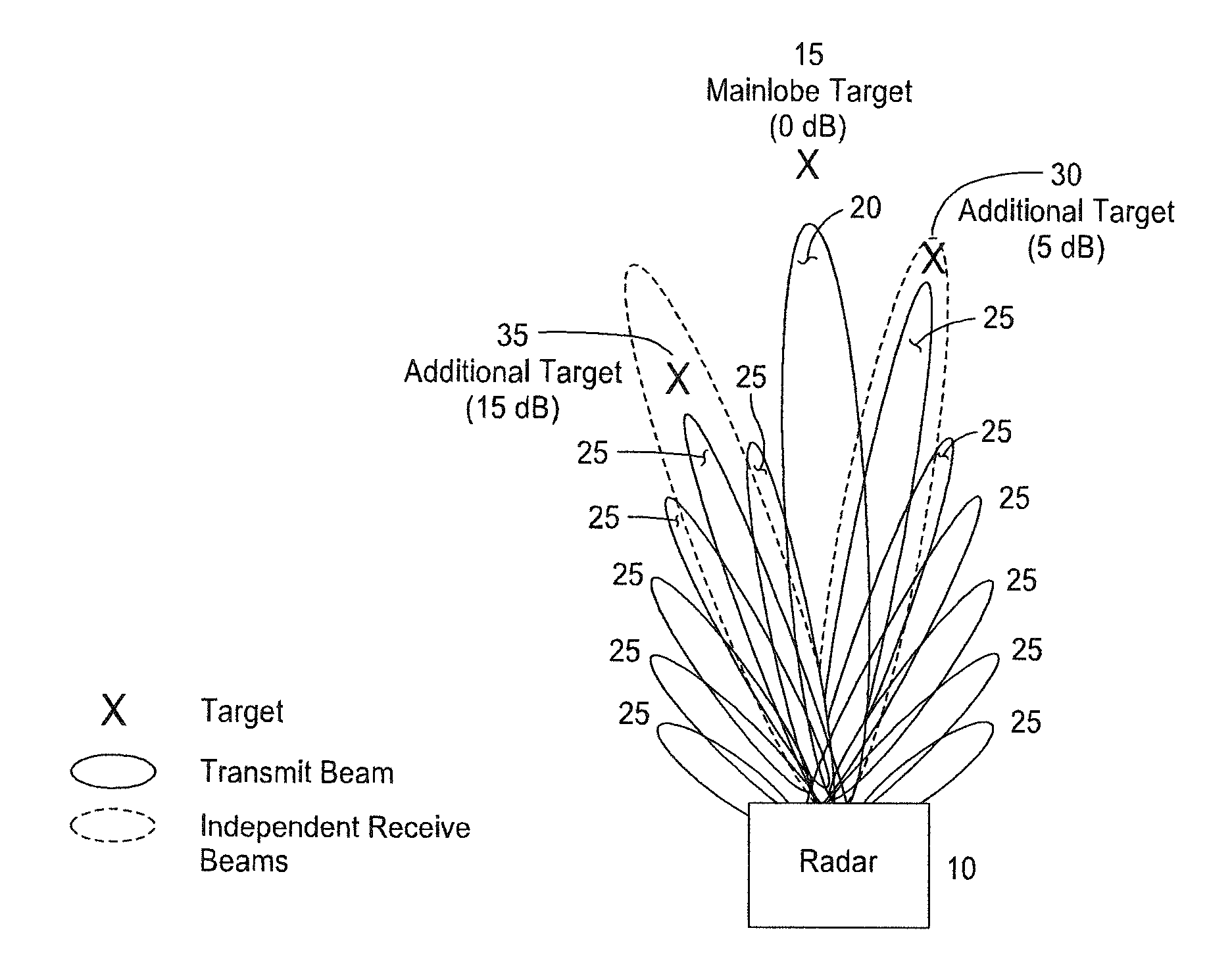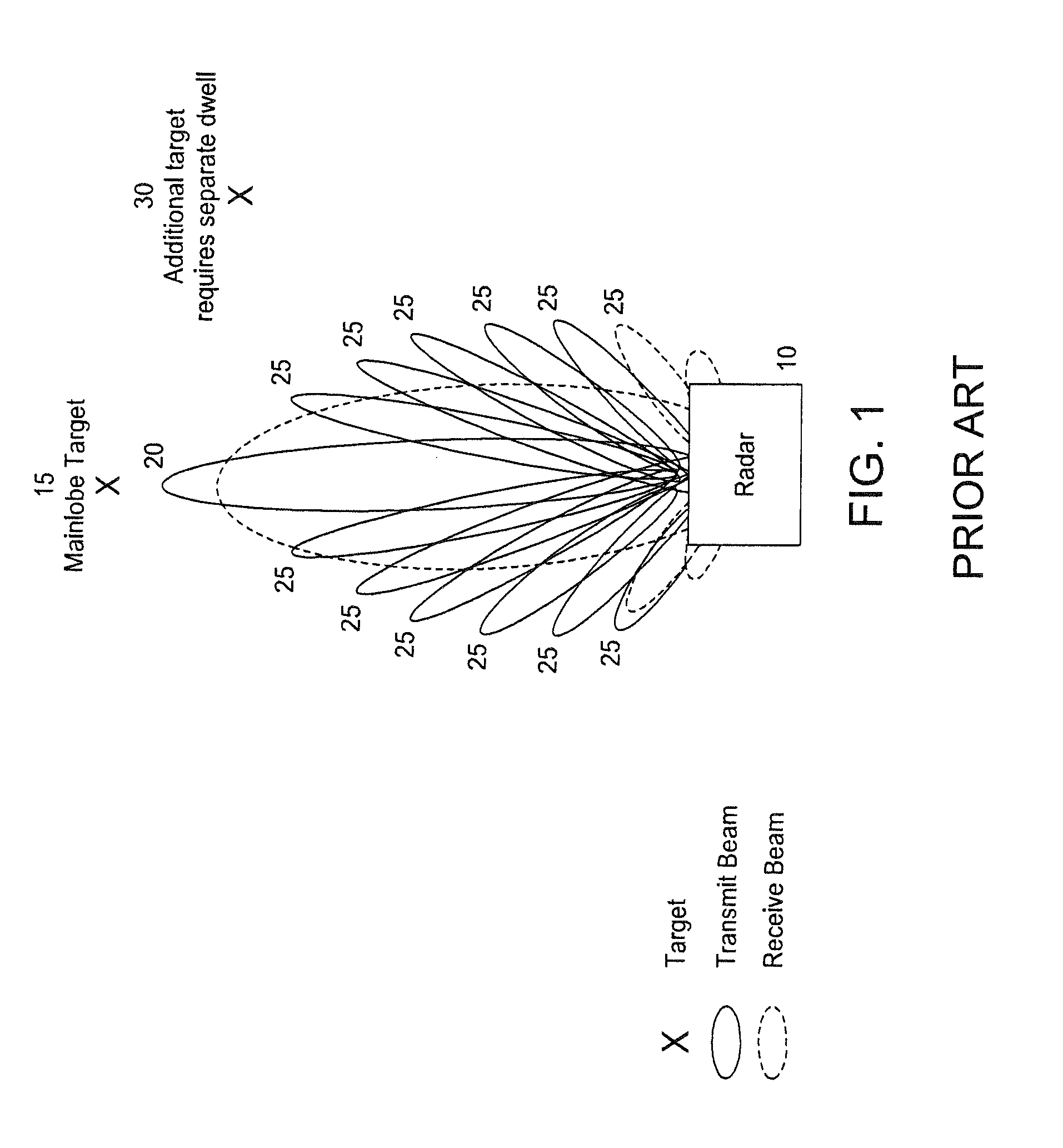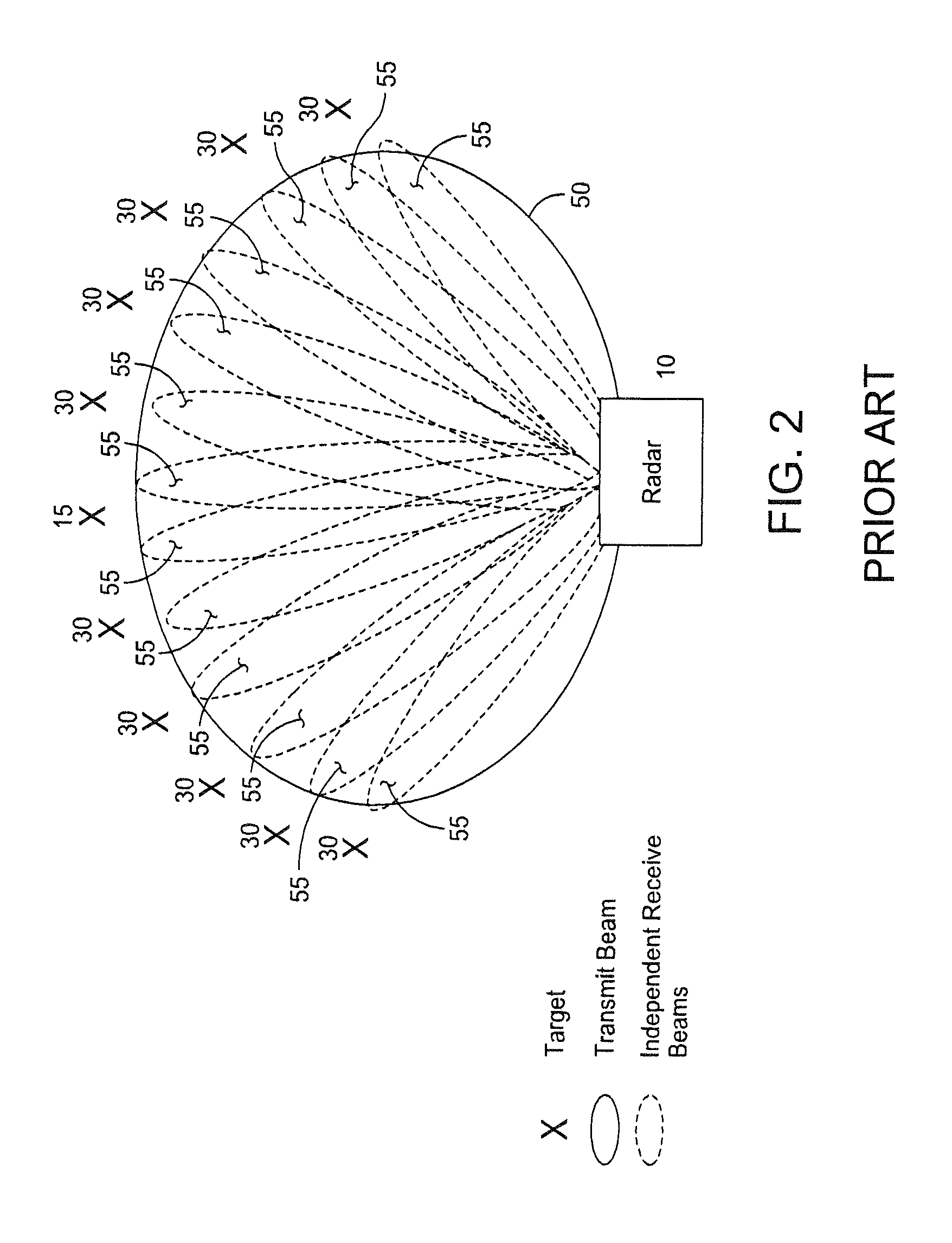Multiple simultaneous transmit track beams using phase-only pattern synthesis
a track beam and phase-only technology, applied in the field of radar tracking, can solve the problems of reducing sensitivity, limiting the number of other operations that can be scheduled, and large amount of wasted energy being sent to the angles where targets are located, so as to achieve the effect of increasing the dwell tim
- Summary
- Abstract
- Description
- Claims
- Application Information
AI Technical Summary
Benefits of technology
Problems solved by technology
Method used
Image
Examples
Embodiment Construction
[0025]This invention provides a method for tracking multiple targets while minimizing radar resources and increasing Doppler sensitivity.
[0026]FIG. 3 shows a notional representation of a method for tracking multiple targets according to an embodiment of the disclosure. Radar 10 is configured to emit a standard radar transmit signal with a main lobe 20 directed at the primary target 15 and associated sidelobes 25. If a secondary target 30 is identified as being within a sidelobe 25 and has a strong return signal (e.g., because it has a large radar cross section or because it is close to the radar), an independent digital receive beam 35 may be formed in the direction of the secondary target, to substantially align with the secondary target. In this way, a primary target and a secondary target may be tracked in the same time that a single primary target would be tracked. Thus, this method avoids tracking using the prior art method of tracking each target with a separate main lobe. Thi...
PUM
 Login to View More
Login to View More Abstract
Description
Claims
Application Information
 Login to View More
Login to View More - R&D
- Intellectual Property
- Life Sciences
- Materials
- Tech Scout
- Unparalleled Data Quality
- Higher Quality Content
- 60% Fewer Hallucinations
Browse by: Latest US Patents, China's latest patents, Technical Efficacy Thesaurus, Application Domain, Technology Topic, Popular Technical Reports.
© 2025 PatSnap. All rights reserved.Legal|Privacy policy|Modern Slavery Act Transparency Statement|Sitemap|About US| Contact US: help@patsnap.com



